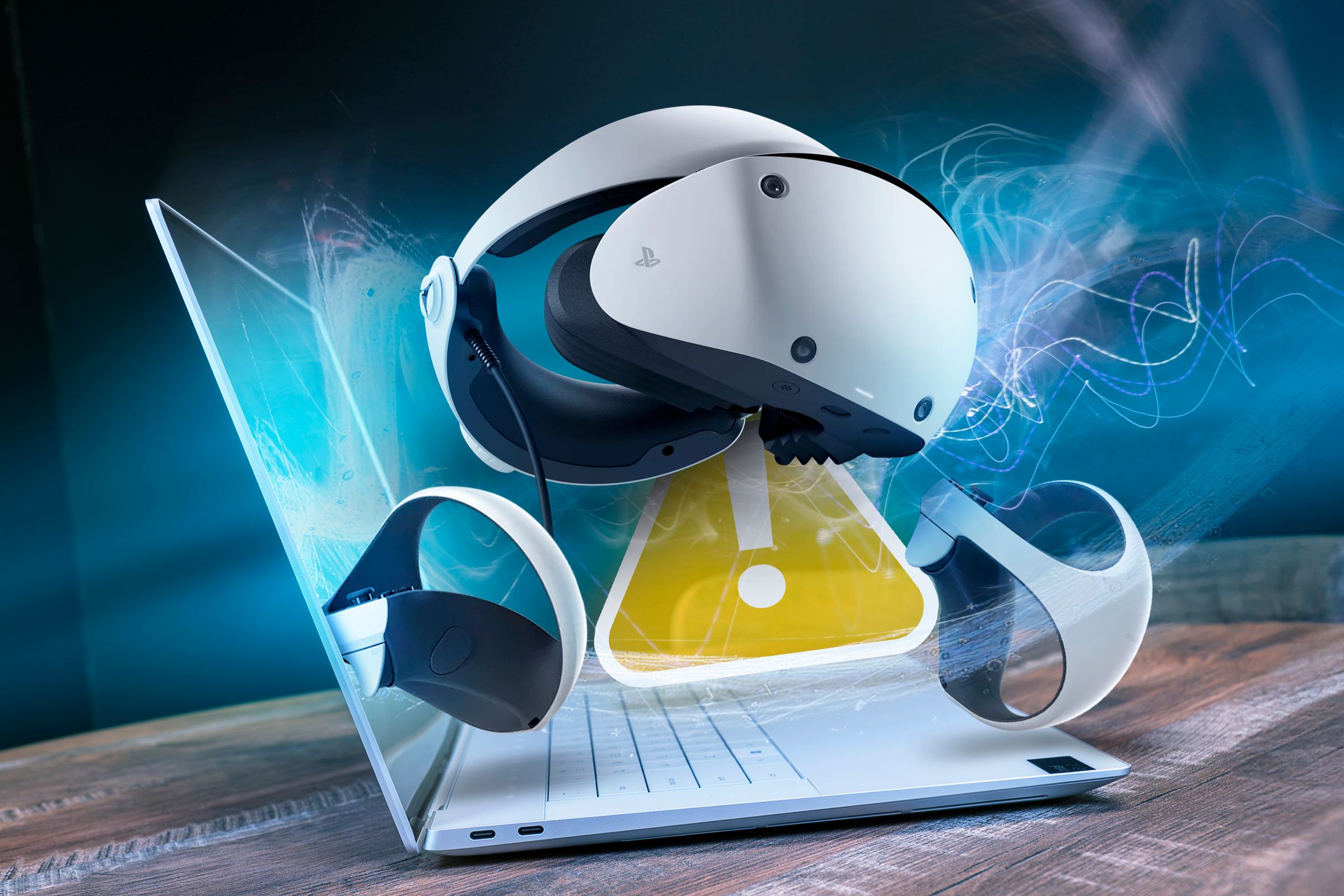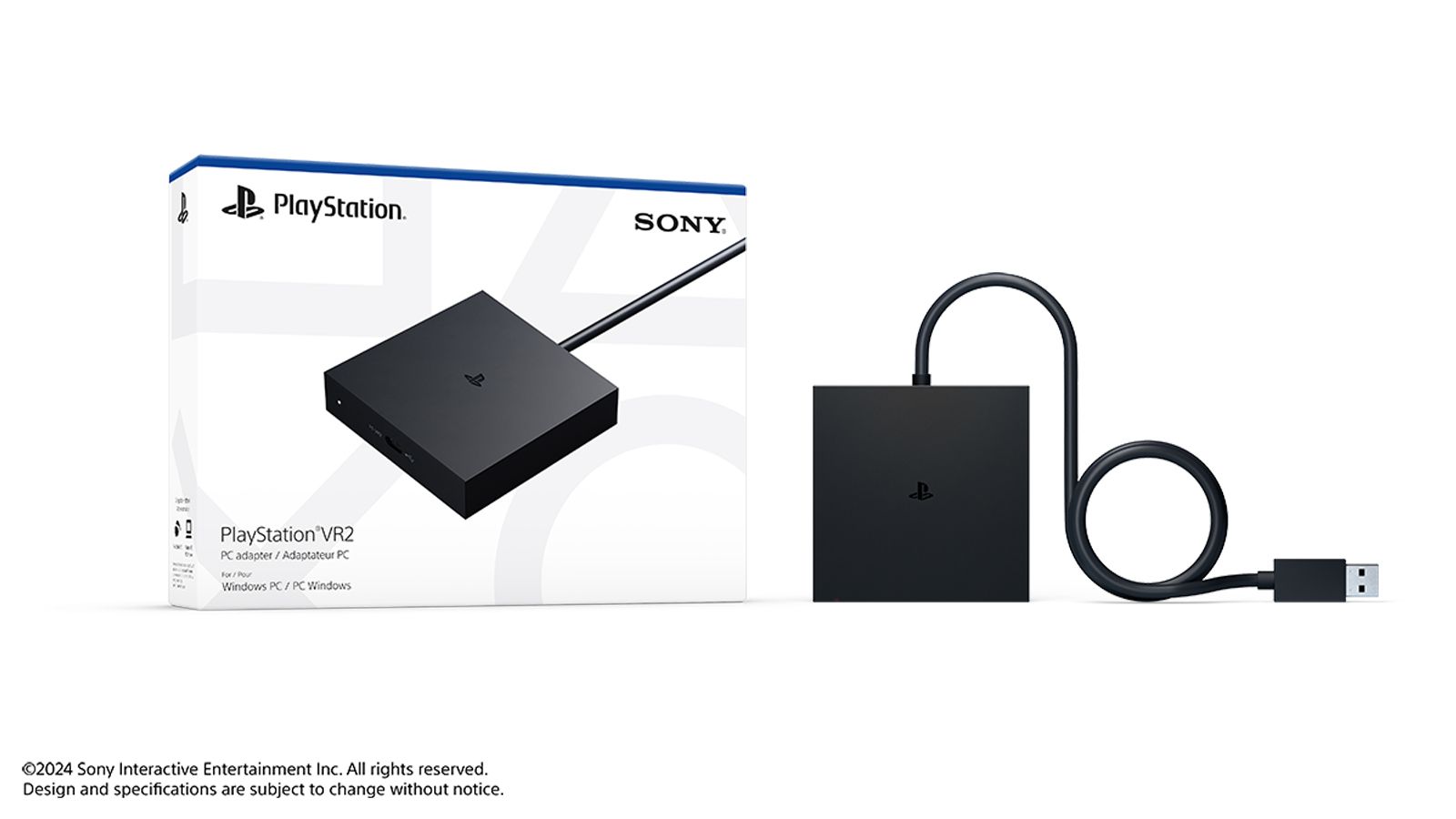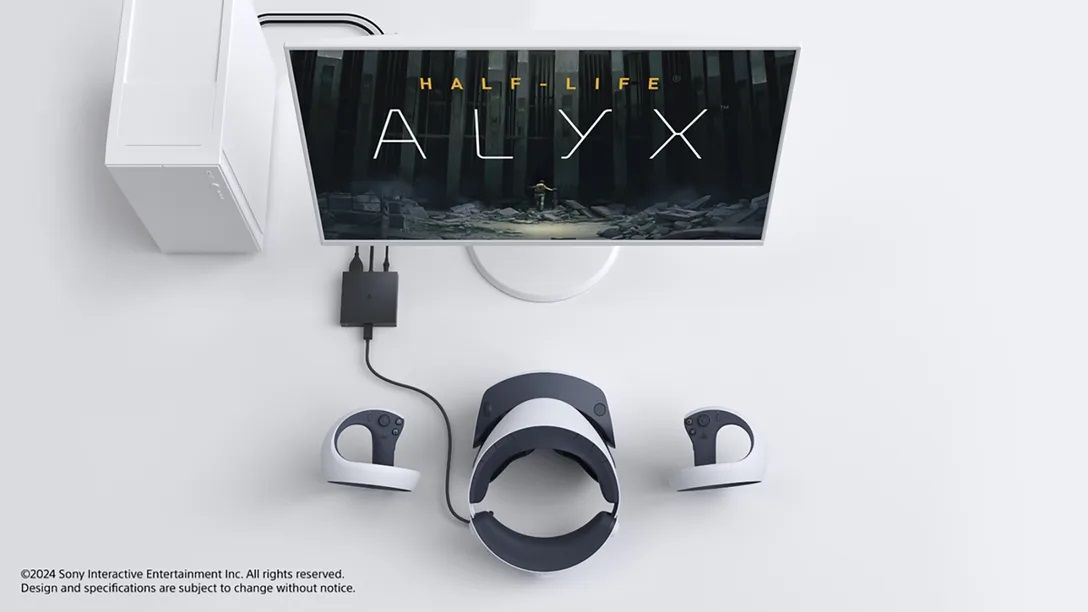
Coming Soon! The PSVR2 for PCs - Key Reasons to Think Twice Before Buying

Coming Soon! The PSVR2 for PCs - Key Reasons to Think Twice Before Buying
Key Takeaways
- PSVR 2 on PC requires a pricey adapter, not as seamless as other headsets.
- Lack of eye-tracking and HDR on PSVR 2 diminishes the potential PC experience.
- Missing features like eye-tracked foveated rendering and haptics make PSVR 2 PC compatibility less attractive for some.
Sony is making its PSVR 2 VR headset compatible with PCs, but while this is something that we and many others had hoped for, it seems the reality of the PSVR 2 on PC might not be quite worth it after all.
It Needs an Expensive Breakout Box
In order to use the PSVR 2 with a PC , you’ll have to purchase an adapter from Sony. The main reason for this is that most people don’t have USB-C ports on their desktop PCs that support DisplayPort over USB-C . This allows for uncompressed video to be sent over the USB-C cable just as if it were a DisPlayport cable. In contrast, a Meta Quest headset can work with any sufficiently fast USB port because it does not use a display protocol like HDMI or DisPlayport. Instead, it’s compressing video on the computer and streaming it to the headset, where the Quest’s onboard processors rapidly decompress it. This leads to a dip in image quality, but one that most people won’t notice.

Sony
The adapter will sell for around $60, which isn’t a lot in the greater scheme of things, but it does seem rather pricey to convert a $500-ish headset to work with a PC. Also, while this might change closer to launch, it doesn’t seem that those of us who do have the right USB-C ports can skip the adapter. For example, many gaming laptops have a USB-C port that natively supports DisplayPort. If Sony let us use this port without the adapter, that would certainly make the whole thing more palatable, where the adapter is only a necessary evil for those without the right hardware. Right now it feels like I’ll have to pay $60 for something I technically should not need.
There’s No Eye Tracking
When I originally asked for PSVR 2 PC compatibility in 2022, one of the main reasons was to benefit from the eye-tracking technology on the PSVR 2. Something which most PC VR headsets don’t have. Of course, games need to support this feature as well, but if a popular headset offers it then more developers will implement it. Perhaps more importantly, if or when popular VR titles such as Gran Turismo 7 make their way over to PC, they’ll already have the feature baked in.
Eye tracking has numerous benefits in VR, including acting as an extra input type (e.g. the game knows what you’re looking at) and can help performance by only rendering what you’re looking at in the highest detail. A method known as “foveated rendering .’ While I did not expect PC VR games to take advantage of this immediately, for now it seems Sony is shutting the door on PC developers using this feature at all.
There’s No HDR
The PSVR 2 uses exceptional OLED screen technology, one of the major losses Quest owners mourned moving from the original Quest to its sequels. If you use the PSVR2 with a PC, you’ll still get the many benefits of OLED, but not the amazing level of HDR the PSVR 2 is capable of. When I play Gran Turismo 7 in VR on my PS5, the sunlight can literally blind you. It’s one of the biggest reasons the visuals are so convincing, and knowing you have the hardware, but not the software support, when using it on a PC feels more than a little tragic.
Foveated Rendering Is Limited, No Fancy Haptics
As I already mentioned, a lack of eye-tracking means you can’t have the laser-precise foveated rendering present on the PS5. However, a limited form of this method which already works on all VR headsets can still be implemented. The only problem with this static type of foveated rendering is that it only looks good if you stare straight ahead, if you look around without moving our head, you’ll notice the blurry, low-details parts of the image.
To add insult to injury, adaptive triggers and the incredible haptics in the controllers are absent as well . On the PS5, this elevates the immersion and quality of tactile feedback beyond anything on a PC. Having this feature missing is a travesty. It might be related to the limitations of Bluetooth, however. Since if you use Bluetooth with a DualSense controller on a PC, you also don’t get any of the fancy haptics. The controller must be connected using USB, and that’s clearly impractical for VR controllers.
Do Only Existing Owners Need to Apply?

Sony
My first thoughts on the news of how PC compatibility would work for the PlayStation VR2 is that only existing owners of the headset who happen to have a VR-capable PC should spend $60 on the adapter. That’s probably a small market, but then I realized I was looking at this the wrong way. At the time of writing, a PSVR2 costs around $400 online, although the official list price should be closer to $550. Either way, even adding $60 for the adapter to the mix, there simply isn’t another PC VR headset of this fidelity on the market for PC in this price range.
The Quest 3 has the benefit of those compact pancake optics, and all the other niceties of wireless PC VR and standalone VR. However, the PSVR 2 has an OLED display, 4K resolution, inside-out tracking, 120Hz refresh rate, 110-degree field of vision, and is much more comfortable, with excellent light-blocking. This is a headset that competes with high-end products like the Valve Index. Assuming that the software implementation works as advertised, it’s a stellar deal even with those special features locked to the PS5.
Also read:
- [New] 2024 Approved Essential Steps for Diminishing Audio Intensity in Lumafusion
- [New] 2024 Approved Incorporating Tracks Into Online Visual Narratives
- [New] Breaking Language Barriers with These Top 20 Video Translators
- [Updated] In 2024, Capture and Share - Top No-Cost Screen Recorders for Windows/Mac Users
- 2024 Approved How to Stealthily Stream YouTube via Phone's Autoplay
- Discover 4 Reasons for Opting in on Apple Vision Pro
- Discovering Social Media’s Top 5 Innovations in FB for 2024
- Expert Review: Discovering the Wonders of Music with the Nest Smart Speaker
- Exploring the Lenovo P11 Pro - Stunning Performance with Few Downfalls
- QuickCaptureWin Instant Screenshots for PCs for 2024
- Solving WHEA Unrecoverable Mistakes: A Step-by-Step Guide
- Unleash Your Inner Hero in 'Dying Light': An Intense Co-Op Experience of Parkour, Adrenaline, and Thrilling First-Person Gameplay!
- Unveiling the Fun Factor: In-Depth Look at the Syma S111G RC Aircraft
- Title: Coming Soon! The PSVR2 for PCs - Key Reasons to Think Twice Before Buying
- Author: Edward
- Created at : 2025-01-24 23:07:32
- Updated at : 2025-01-29 20:28:37
- Link: https://buynow-help.techidaily.com/coming-soon-the-psvr2-for-pcs-key-reasons-to-think-twice-before-buying/
- License: This work is licensed under CC BY-NC-SA 4.0.